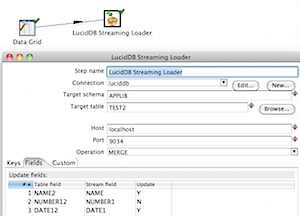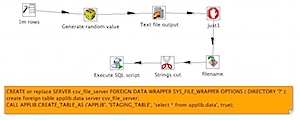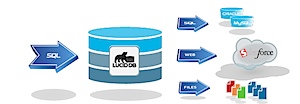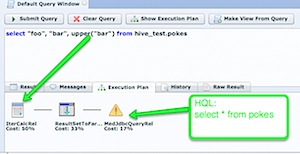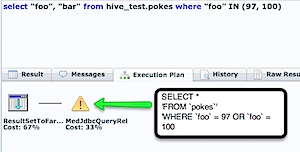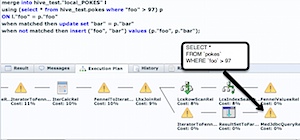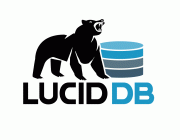To our Partners, Employees, Customers, Friends, and Community:
It is my unfortunate duty to inform all of you that DynamoBI is ceasing commercial operations October 31, 2012; we are immensely grateful for all the support that you all have shown our company, in so many different ways, over the past 3 years and we hope to make this shutdown as painless as possible for all involved. We know that we are not the only people who are invested in LucidDB, so we wanted to explain our rationale for shutting down along with the implications for the entire LucidDB community (not just our customers).
We started DynamoBI 3 years ago when we saw our most favorite open source project, LucidDB, finding limited prospects for adoption without a growth to full, commercial support which many (most!) companies need to be able to adopt open source software. We had been actively working with LucidDB for a long while, and knew that it is a fantastic piece of database/analytic software; to say that it’s a gem and provides some amazing capabilities in an open source package is an understatement.
However, markets and businesses are not quite as simple as having a great open source project and community. I think separately I may blog about the lessons learned from this startup (the entrepreneurial badge of honor #fail blog) but the community deserves to know that, for the most part, the failure to achieve success was about the market and selling environment (and our successes here) than any innate defects in LucidDB.
In short, we were not successful in the marketplace for two primary reasons:
1) In a crowded, loud market of more than 40+ Analytic data storage solutions, raw single query speed remains the singular priority. LucidDB often well improved over MySQL/Oracle but was not as fast as our Analytic peers. All of our other very interesting and compelling features (versioning of data, EII type connectors, pluggable/extensible systems) were often not even evaluated as we were often eliminated from evaluation based on the single raw query speed. LucidDB performs as advertised (great BI database, much faster than what you’re currently using), but that wound up not being enough.
2) Open Source price points are compelling for customers, but work only if you can build a high volume business. It became clear earlier this year (even with building enough cash flow to pay full time staff, etc!) that the size of our “funnel” was not large enough to support a high growth, interesting business. We determined that if we had X number of downloads we ended up with Y prospects that converted to Z customers at price A. We experimented with price, offering, prospect development, etc. We improved our conversion rates over time, but ultimately found that unless we could find some way to increase the mouth of the funnel by more than 100x we wouldn’t have a growing business that would allow us to continue/further our investment in LucidDB.
There are other reasons as well, many of which are missteps or mistakes by me personally. That could fill an entire other blog (and likely will at some point).
We’ve been working with our customers over the past few months to help them prepare for the future with us no longer providing the customer support. We’ve been communicating this message to them, and now we’re bringing it to the greater community about our future participation in LucidDB.
DynamoBI will:
1) Host the git repositories and continue to provide a legal contribution framework so that the IP for the project remains clean for all. The Apache license means that DynamoBI remains free and accessible for anyone/everyone wishing to use it (or parts of it).
2) Contribute any “interesting” pieces of the amazing framework to projects that can use it. In particular, we’re thrilled to see the Optiq project leveraging, as a starting point, some of the LucidDB components.
3) Host the forums, and wiki, and issue tracking for the LucidDB community as we have been for the past few years (http://luciddb.org).
4) Continue to participate as active users in the community; we are still fond of LucidDB and hope to see the community/project be successful.
However, DynamoBI will no longer:
1) Provide releases or builds. We’ve shut down our continuous integration server and do not plan on making any release after 0.9.4.
2) Offer any commercial services for LucidDB (consulting, services, sponsored development, etc).
3) Provide active development on the core project, or ancillary projects.
Once again, thank you for your support over the past few years and we encourage you to continue to look at LucidDB, even though we were unable to make it a commercial success. It has some very unique features that are a perfect fit for some use cases (Big Data access via BI tools, etc) that make it a great open source project.
Kind Regards,
Nick
Former CEO of DynamoBI Corporation
